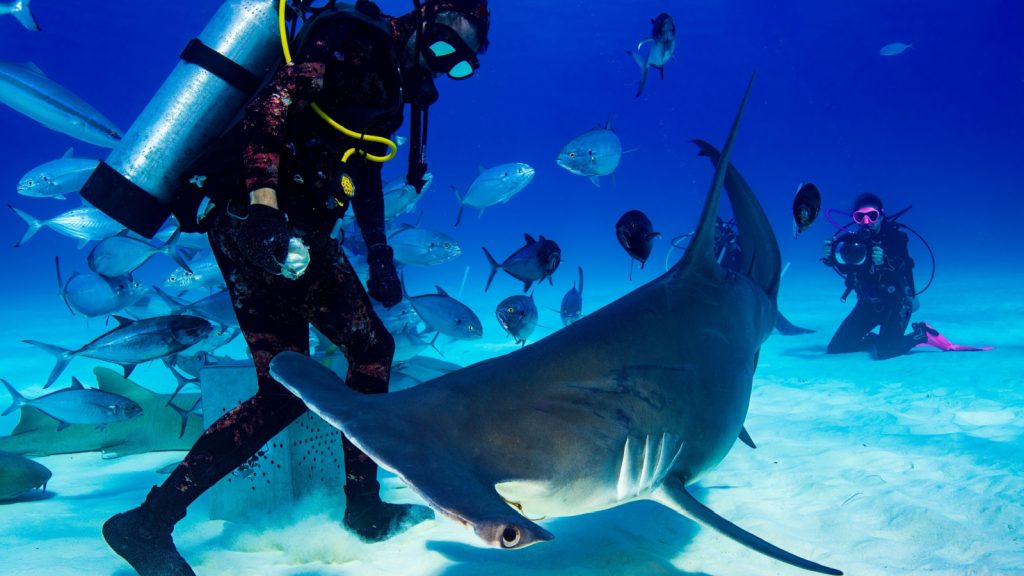Sharks are fascinating creatures that have roamed the oceans for millions of years. Despite their fearsome reputation, sharks are complex animals with unique ways of communicating. Understanding how sharks communicate helps us appreciate these incredible predators and their roles in marine ecosystems. Let’s dive into the various methods sharks use to communicate.
Visual Communication
Because most sharks don’t have vocal cords, they have to rely on other methods of communication to attract a mate, give warnings to other sharks, and generally communicate in their unique habitat.
Body Language
Sharks use body language to convey different messages. When a shark arches its body, it might be showing aggression or dominance. Quick, darting movements can indicate that a shark is excited or agitated. These visual cues help sharks interact with one another without needing to vocalize.
Color Changes
Some sharks can change their color slightly to blend in with their surroundings or signal other sharks. This ability, known as countershading, helps them camouflage from both predators and prey. Darkening or lightening their skin can also be a way to communicate with other sharks in their environment.
Chemical Communication
Chemical communication isn’t as common as body language, but many species use some form of chemical communication when body language alone won’t work.
Pheromones
Sharks release chemicals called pheromones into the water to communicate. These pheromones can convey a range of information, such as marking territory, indicating readiness to mate, or warning other sharks of danger. Sharks have a highly developed sense of smell, allowing them to detect these chemical signals from great distances.
Scent Trails
When a shark is injured, it releases a scent trail that can attract other sharks. This trail acts as a signal, drawing in predators to the potential food source. This form of chemical communication plays a crucial role in how sharks hunt and interact with each other in the wild.
Auditory Communication
Although they don’t have vocal cords, sharks are smart enough to make noises in other ways to communicate.
Sound Production
While sharks do not have vocal cords, they can produce sounds by grinding their teeth or using other body parts. These sounds can be used to ward off potential threats or communicate with other sharks. Although not as common as visual or chemical communication, sound production is still a part of how sharks interact.
Hearing
Sharks have an acute sense of hearing that allows them to detect low-frequency sounds. They can hear movements and vibrations in the water, which helps them locate prey and stay aware of their surroundings. This sensitivity to sound is crucial for their survival in the ocean.
Electroreception
Sharks have an extra sense – electroreception. All creatures give off bioelectric fields, and sharks can sense these.
Ampullae of Lorenzini
Sharks possess specialized organs called the Ampullae of Lorenzini, which allow them to detect electrical fields produced by other animals. This sense, known as electroreception, helps sharks locate prey even when it is hidden under sand or other substrates. It also aids in navigation by detecting the Earth’s magnetic field.
Social Interactions
Electroreception plays a role in social interactions among sharks. They can sense the electrical signals of other sharks, helping them to maintain social bonds and coordinate movements, especially during hunting or mating.
Communication During Mating Season
During mating season, sharks communicate in very specific ways to find and attract mates.
Pheromone Signaling
During mating season, female sharks release specific pheromones into the water to signal their readiness to mate. These chemical signals attract male sharks from significant distances, guiding them to the receptive females. This method ensures that males can locate females even in the vast expanse of the ocean.
Physical Contact
Sharks often engage in physical contact during mating rituals. Males may bite the female gently to hold onto her while aligning their bodies for mating. This behavior, although it might look aggressive, is a common and necessary part of the mating process for many shark species.
Display Behaviors
Males might also perform specific swimming patterns or display certain body postures to attract females and ward off rival males. These displays ensure that only the strongest and most fit males get to mate, which helps maintain healthy shark populations.
Katy Willis is a writer, master herbalist, master gardener, and certified canine nutritionist who has been writing since 2002. She’s finds joy in learning new and interesting things, and finds history, science, and nature endlessly fascinating.

